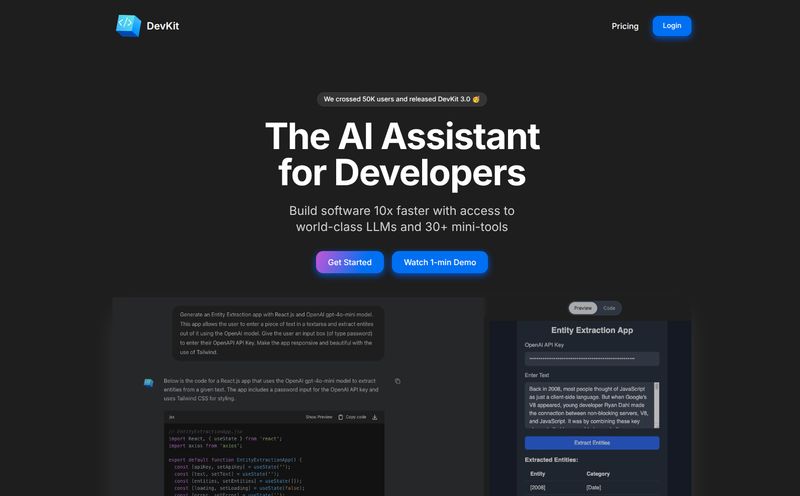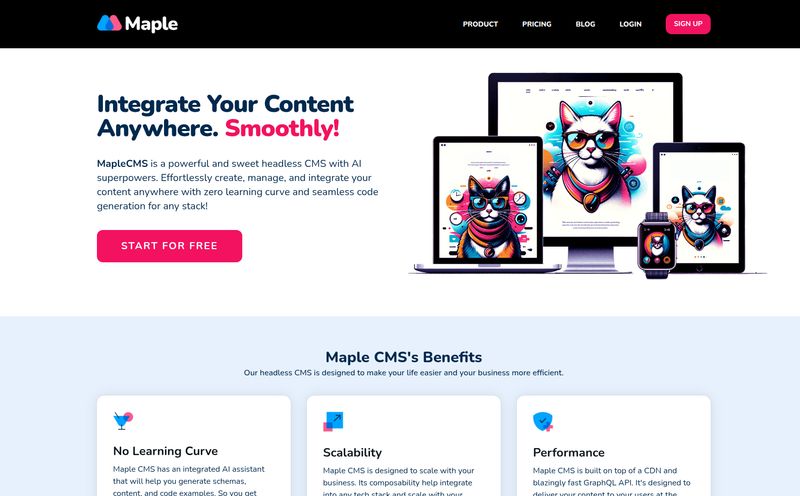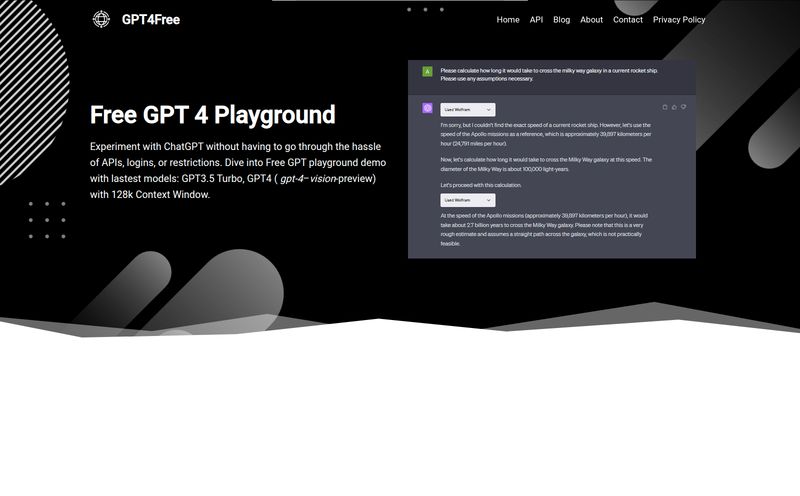For years, we’ve been in a browser rut. It’s been a two-horse race, with a few plucky contenders on the sidelines. We get a new feature here, a speed bump there, but the fundamental experience? It hasn’t changed much since we were all arguing about Firefox vs. Chrome in college dorms. We open tabs. We open more tabs. We drown in tabs. Our computer fans spin up, sounding like a tiny jet engine taking off, and we declare “tab bankruptcy,” closing everything in a fit of rage only to repeat the cycle tomorrow.
So when something new comes along that promises to fundamentally change how we interact with the web, my inner SEO-nerd sits up and pays attention. The latest contender is a tool called AiPlix. It calls itself an “AI-augmented browser.” And just before I started writing this, my screen ironically flashed a “Verifying that you are not a robot…” message. The timing is just... perfect. Because today, we’re talking about a browser that wants to do the robotic work for you.
But is it just another shiny object in the great AI gold rush of the 2020s, or is it genuinely useful? I’ve spent some time digging into what it claims to do, and I've got some thoughts.

Visit AiPlix
So, What Is AiPlix, Really?
In the simplest terms, AiPlix isn't just a window to the internet; it wants to be your brain's co-processor for the internet. Instead of you manually sifting through mountains of data, AiPlix uses a team of 24 on-device AI agents to automate the grunt work. Think of it less like a simple browser and more like a tireless research assistant that lives inside your computer.
The big deal here is the phrase “on-device.” Unlike many AI tools that send your data to a massive server farm in who-knows-where to be processed, AiPlix does its thinking locally on your machine. From a privacy standpoint, that’s a massive plus. Your browsing habits, your research, your weird late-night Wikipedia holes—they stay with you. This is a direct shot across the bow at the data-hungry models of Big Tech, and I am here for it.
It’s designed to retrieve, summarize, and organize information for you, sometimes before you even ask. It’s an ambitious goal that could either be incredibly powerful or incredibly annoying. Let’s see which one it is.
The Features That Actually Matter
A feature list is just a list. What matters is how it impacts your workflow. I’ve grouped the most interesting bits of AiPlix into the problems they actually solve.
Taming the Tab Tsunami: Automation and Organization
This is the big one for me, and probably for you too. AiPlix comes with automated tab decluttering. Hallelujah. But it's more than just closing old tabs. It claims to have predictive browsing, anticipating what you might need next. Its AI can also dive into a dense, jargon-filled article and pull out a neat summary for you. Imagine researching a complex topic and getting the Cliff's Notes version of every source as you browse. That’s a game-changer for students, journalists, and anyone who has to learn things quickly.
And for multitasking, it has floating tabs. It's a small thing, but being able to pull a tab out and have it hover over your workspace while you're writing or coding is one of those quality-of-life improvements that you dont know you need until you have it.
Meet RAYA, Your On-Device AI Sidekick
RAYA is the name given to the core context-aware AI in AiPlix. The idea is that it understands what you're currently looking at and provides relevant insights. So, if you're on a product page, it might be able to pull up reviews or price comparisons without you opening ten new tabs to do it yourself. If you're reading a news story, it could provide background information or related articles. It's a proactive, not reactive, assistant. How well this works in practice will depend heavily on its execution, but the concept is solid gold.
Privacy First, Not an Afterthought
I’ve already touched on the on-device AI, but the privacy focus goes deeper. AiPlix has a feature called “Vanish mode,” which sounds like an ephemeral browsing session on steroids—perfect for when you need to check something sensitive without leaving a trace. More importantly, it offers Secure Vaults. This is an encrypted space within the browser to store sensitive data. Think of it as a built-in password manager and secure notepad rolled into one, but for anything you want to keep locked down. In an age of constant data breaches, building security into the browser's DNA rather than bolting it on with extensions feels like the right move.
The Good, The Bad, and The AI-Powered
No tool is perfect. Let's get down to brass tacks. What's great about AiPlix, and what are the potential deal-breakers?
On the plus side, the level of automation and AI-powered summarization is incredibly appealing. The potential to streamline research and cut down on digital clutter is immense. I love, love, love the emphasis on privacy and on-device processing. It feels like a browser built for the user, not for the advertiser. Having a tool that respects my data by default is a huge selling point.
However, I have some reservations. There's going to be a learning curve. This isn't your grandpa's Internet Explorer. To get the most out of 24 AI agents and a context-aware assistant, you'll probably need to spend some time learning how it all works. My biggest technical concern is performance. On-device AI processing is cool, but it requires CPU and RAM. On an older or less powerful machine, I worry AiPlix could turn a speedy laptop into a hot, sluggish brick. It's the classic privacy-vs-convenience trade-off, with performance thrown into the mix.
And finally, there's the age-old problem for any new browser: website compatibility. The web is built and tested primarily for Chrome. Niche browsers, no matter how innovative, sometimes stumble on websites that use non-standard code. It's a potential frustration to keep in mind.
What's the Damage? A Look at AiPlix Pricing
Here's the million-dollar question. As of my writing this, there's no public pricing information available for AiPlix. This isn't uncommon for a product that might still be in a beta or pre-launch phase.
I can only speculate, but I imagine a few possible models. It could be a subscription service, similar to what other productivity tools like Superhuman do. A monthly fee of $5-$10 would seem reasonable if it delivers on its promises. They could also go for a one-time purchase fee, though that's less common these days. A third option would be a freemium model: a basic version for free, with the heavy-duty AI features locked behind a pro subscription. For my money, I hope they go with a transparent, one-time or subscription model rather than trying to monetize user data, which would defeat their entire privacy-first ethos.
Is AiPlix Worth the Switch? My Honest Take
So, should you ditch Chrome tomorrow? Probably not... yet. But you should absolutely keep AiPlix on your radar. What AiPlix represents is a philosophical shift in what a browser should be. For two decades, browsers have been passive windows. AiPlix wants to be an active participant.
This tool isn't for the casual user who just checks Facebook and reads the news. This is for the power users, the researchers, the students drowning in reading lists, the content creators who live on the web, and the privacy advocates who are fed up with being the product. It's for people who see the internet as a tool for knowledge and productivity, not just consumption.
If AiPlix can nail the user experience and manage the performance trade-offs, it could easily become the browser of choice for a dedicated, savvy audience. It's a bold swing, and in a market this stagnant, I'm always happy to see someone step up to the plate.
Frequently Asked Questions
- How is AiPlix different from just using a ChatGPT browser extension?
- The main difference is integration and privacy. Extensions are reactive; you have to copy-paste or highlight text to get them to work. AiPlix's AI is proactive and built-in, designed to work seamlessly with the browser's functions. Plus, its on-device processing means your data isn't being sent to a third-party AI company's servers.
- Does "on-device AI" mean AiPlix works completely offline?
- Not entirely. You'll still need an internet connection to, you know, browse the internet. But the AI processing—the summarization, organization, and analysis—happens on your local machine. This means some AI features might work on locally saved web pages, but the core function is still online.
- Is AiPlix safe for things like online banking?
- Based on its features, it seems designed with high security in mind. Features like Secure Vaults and on-device data encryption are a very good sign. That said, you should always practice standard online safety, no matter which browser you use.
- Will AiPlix feel slow on my computer?
- This is a valid concern. On-device AI is more resource-intensive than cloud-based AI. While we don't have official system requirements, it's safe to assume you'll have a better experience on a more modern computer with a decent amount of RAM.
- Can AiPlix import my bookmarks and passwords from Chrome?
- Any new browser aiming for serious adoption almost always includes an import tool to make switching easier. While not explicitly stated in the info I have, it would be a major oversight if AiPlix didn't offer a simple way to migrate from other browsers.
A Smarter Way to Surf
Ultimately, AiPlix feels like a glimpse into the future. For years, we've adapted our workflows to the limitations of our tools. We became expert tab managers and masters of the ctrl+F command. Tools like AiPlix flip that script. It’s an exciting premise: a browser that adapts to us. It's a digital butler, a research partner, and a security guard all in one. It’s ambitious, and it might have a few kinks to work out, but it's one of the most interesting ideas to hit the browser space in a long time.
References and Sources
- Information about AiPlix features and philosophy was sourced from publicly available product descriptions and analyses.
- For more on the browser wars and market share, you can check out data from sources like Statcounter GlobalStats.
- To learn more about the difference between on-device and cloud-based AI, articles from tech publications like The Verge or WIRED are excellent resources.



